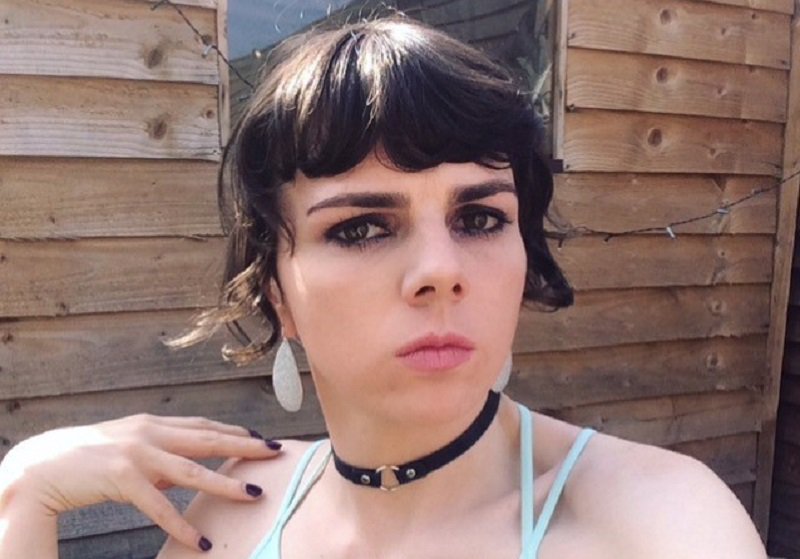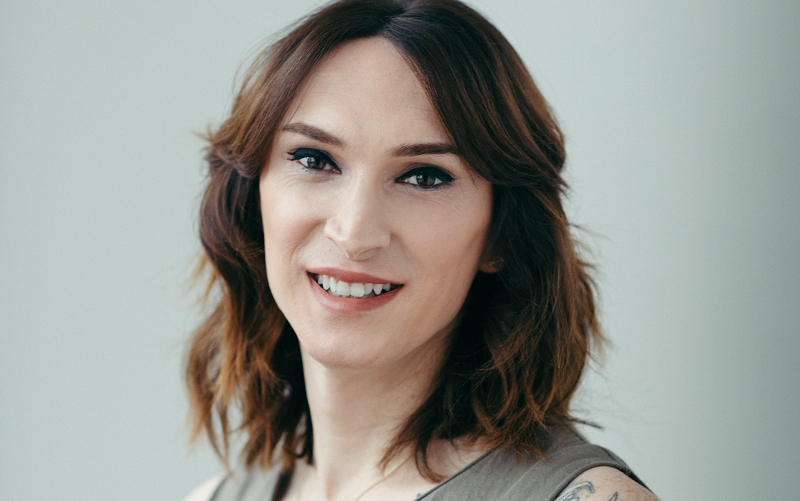‘It’s not homophobic to say some gay men are actually trans – I should know, I was one of them’
By Will Stroude

As part of her promotion of her forthcoming book, The Gender Games: The Problem with Men and Women by Someone Who Has Been Both, the trans author Juno Dawson has been interviewed by Attitude editor-in-chief Matt Cain about her life and transition. Prior to her transition, Dawson lived as a gay man – in fact, she was a celebrated ‘gay author’ of young adult fiction.
Already, the piece has attracted some controversy because of a quotation from Dawson which appears on the magazine cover: “Lots of gay men are actually trans women”.
In isolation, perhaps the quotation seems alarming to some gay guys, who recall being bullied for ‘acting like women’ or not being ‘real men’. I appreciate that the last thing you may want to hear after a lifetime of fighting for your sexuality to be respected is that that work and fighting could be erased and that someone is saying you’re actually a woman – just like the school homophobes always said. But I don’t think this is what Dawson meant. At all. Instead, I think she was referring to a very specific experience – the experience of some transgender women, who grew up as boys in the past twenty years when gay rights and visibility advanced thanks to the tireless work of gay campaigners but trans rights lagged behind.
Dawson isn’t on her own in this experience – the trans journalist Paris Lees has written about how in her teenage years she tried to slot into the gay scene, though she didn’t quite fit, the trans model Hari Nef told the New York Times: “I used to think I was a gay man with this idea of a muse in my head, like a woman that I thought was inspirational or aspirational. But the woman was actually me.” The trans actress Laverne Cox came out as gay in her teens before working in drag bars then transitioning. The current series of Rupaul’s Drag Race features Peppermint, a drag queen who is also a trans woman – in a recent episode she discussed how her early experience with drag on the gay scene helped her come to terms with her trans womanhood.

While there are also trans lesbians who previously appeared to the world as straight men, and there are nonbinary people who are neither male nor female, or a bit of both, it seems worth acknowledging that there are, in particular, a lot of trans women who spent a good portion of their lives identifying as gay men. I should know – I’m one of them. In December 2014, I wrote a piece for the Guardian about being a proudly feminine gay man who wore makeup on the weekends. I remember the day the piece was published – it got hundreds of “likes” on Facebook and I had messages thanking me from gay men across the community for speaking proudly about breaking gender stereotypes. But inside I was dying. As I was moving through my twenties the gulf between me and my body was getting wider, it upset me more and more that I looked, sounded and moved through the world as male and this was how I was supposed to see out the rest of my life. I had a breakdown. And then I finally admitted I was transgender.
Juno Dawson’s comment may feel alarming and unwanted to some gay men but I’d ask them to consider someone like me as a teenage boy – severely depressed by “his” male puberty and bullied all the time for being gay. “Gay”. I was called it long before I knew what it meant and had all the usual stuff about blowjobs and anal shouted at me from when I was about 13 onwards. There were gay boys at my school too and I was friends with some of them – we were bullied together, in the exact same way. As I hit puberty, I watched gay porn and knew I fancied boys – but that wasn’t the issue. I felt wrong. Not my sexuality – me. I never once wished to be a straight man. I wished I was not having the expectations of masculinity placed on me at all. I hardened to the jibes and came out as gay at university. But I didn’t have gay sex until I was 25. I then became a bit of a slag and dated a few people but the wrongness remained. Coming out was supposed to be starting your life as who you really are but my ‘gay’ years were perhaps my most lost.
Growing up, I didn’t know what a trans woman was – I had seen Nadia Almada on Big Brother and Hayley on Coronation Street but they were called “transsexuals” back then and were often portrayed as hyperfeminine women who always had lots of surgery. Nothing so subtle as when I actually met trans women on the scene in London and heard their stories. All of us were different but I started to realise I heard more of myself in trans stories than gay ones. “Oh god. My poor mum”, I thought as I remembered coming out to her when I was 19, “she’s going to have to go through it all again.”

Since I came out and started writing and being visible as a trans woman in the media, other trans women have come out to me. Quite a lot of them. Except they don’t look like you might expect trans women to look. They look like boys – and they sometimes have sex with boys so people have called them gay and they’ve gone along with that while they work out how to find a way to come out as trans. If you’re a boy who isn’t ready to come out as a woman but still bangs men every now and then the gay label is the one everyone will attach. But it’s not always right. For some of us, it’s another mask we wear to protect ourselves from the harsh reality of transphobia – its more acceptable than it used to be to be gay now (thankfully) and, in any case, sexuality is easier to keep low-key than gender. Juno Dawson’s interview points to a reality – when you don’t let people be who they want to be they will disguise themselves and, for some women, gay identity is such a disguise.
The start of the gay rights movement – the Stonewall Riots in 1969 – featured gay men alongside trans women – women like Sylvia Rivera who called herself “gay” her whole life. Back then “gay” was a much wider term than it is now and included people who were trans women. Just watch films like Paris is Burning and you’ll see our communities and identities have always had an overlap. You can be a feminine gay man and a masculine trans woman, or a masculine gay man or a feminine trans woman. There are trans men who were raised as straight girls who transition and become gay men! There are straight men who transition who become lesbians! There are gay men who transition and become lesbians! It’s so wild! These are real experiences and part of the great diversity of the LGBT community – the point is not that we undermine each other but support each other to be who we want and need to be.
I sometimes joke to my gay friends that they should transition when they say they’re sick of the gay scene – it’s a joke I can make about them rooted in our shared struggle and their own security that they are not women, but men. They support me in my womanhood. It’s complicated in some ways but very simple in others.
Oh and finally – whether you’re top or bottom has nothing to do with your gender. Plenty of the most feminine trans women I know are total tops. And trust me – if you saw my dating app messages you’d realise that straight men are the biggest bottoms of all.
Shon Faye is a writer and comedian based in Bristol. She is a regular contributor to Novara Media on LGBT issues and mental health. Follow her on Twitter @shonfaye.
More stories:
29-year-old Martyn Hett confirmed among victims of Manchester terror attack
Gay Tongan Olympian Amini Fonua on representing a country where it’s illegal to be gay
